Xiangrui Li
Learning Compact Features via In-Training Representation Alignment
Nov 23, 2022



Abstract:Deep neural networks (DNNs) for supervised learning can be viewed as a pipeline of the feature extractor (i.e., last hidden layer) and a linear classifier (i.e., output layer) that are trained jointly with stochastic gradient descent (SGD) on the loss function (e.g., cross-entropy). In each epoch, the true gradient of the loss function is estimated using a mini-batch sampled from the training set and model parameters are then updated with the mini-batch gradients. Although the latter provides an unbiased estimation of the former, they are subject to substantial variances derived from the size and number of sampled mini-batches, leading to noisy and jumpy updates. To stabilize such undesirable variance in estimating the true gradients, we propose In-Training Representation Alignment (ITRA) that explicitly aligns feature distributions of two different mini-batches with a matching loss in the SGD training process. We also provide a rigorous analysis of the desirable effects of the matching loss on feature representation learning: (1) extracting compact feature representation; (2) reducing over-adaption on mini-batches via an adaptive weighting mechanism; and (3) accommodating to multi-modalities. Finally, we conduct large-scale experiments on both image and text classifications to demonstrate its superior performance to the strong baselines.
Improving Adversarial Robustness via Probabilistically Compact Loss with Logit Constraints
Dec 14, 2020
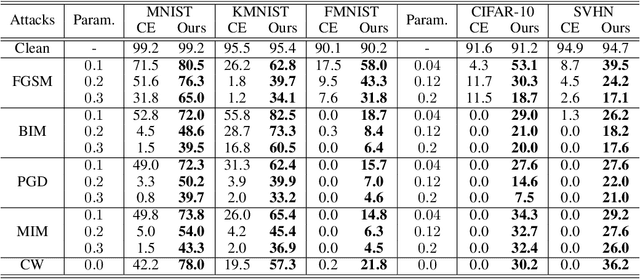

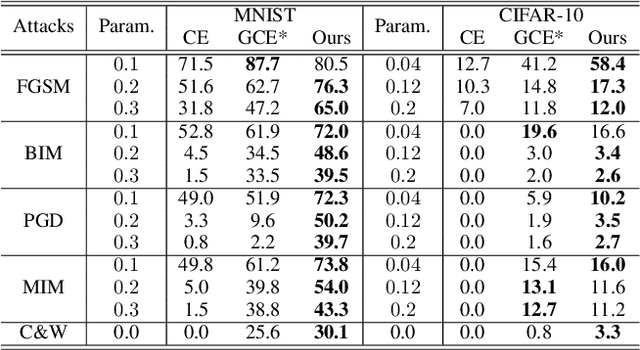
Abstract:Convolutional neural networks (CNNs) have achieved state-of-the-art performance on various tasks in computer vision. However, recent studies demonstrate that these models are vulnerable to carefully crafted adversarial samples and suffer from a significant performance drop when predicting them. Many methods have been proposed to improve adversarial robustness (e.g., adversarial training and new loss functions to learn adversarially robust feature representations). Here we offer a unique insight into the predictive behavior of CNNs that they tend to misclassify adversarial samples into the most probable false classes. This inspires us to propose a new Probabilistically Compact (PC) loss with logit constraints which can be used as a drop-in replacement for cross-entropy (CE) loss to improve CNN's adversarial robustness. Specifically, PC loss enlarges the probability gaps between true class and false classes meanwhile the logit constraints prevent the gaps from being melted by a small perturbation. We extensively compare our method with the state-of-the-art using large scale datasets under both white-box and black-box attacks to demonstrate its effectiveness. The source codes are available from the following url: https://github.com/xinli0928/PC-LC.
Unsupervised Self-training Algorithm Based on Deep Learning for Optical Aerial Images Change Detection
Oct 22, 2020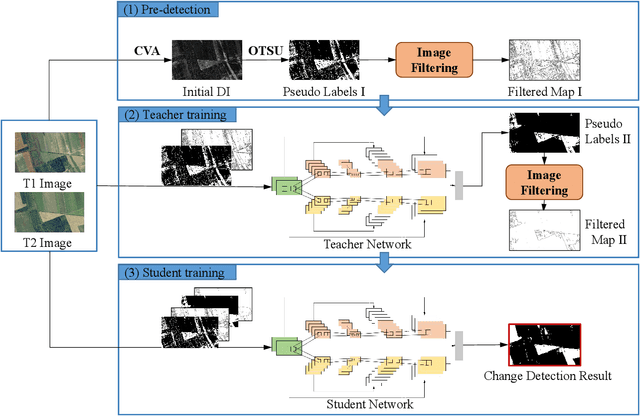
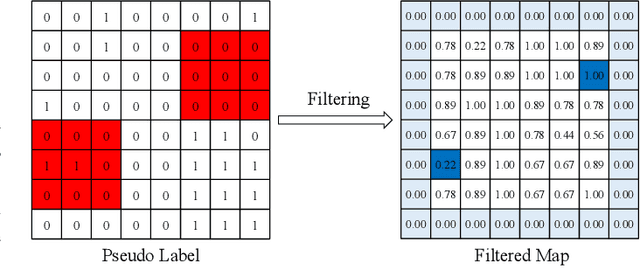
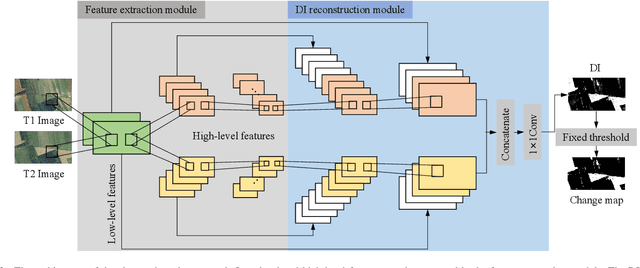

Abstract:Optical aerial images change detection is an important task in earth observation and has been extensively investigated in the past few decades. Generally, the supervised change detection methods with superior performance require a large amount of labeled training data which is obtained by manual annotation with high cost. In this paper, we present a novel unsupervised self-training algorithm (USTA) for optical aerial images change detection. The traditional method such as change vector analysis is used to generate the pseudo labels. We use these pseudo labels to train a well designed convolutional neural network. The network is used as a teacher to classify the original multitemporal images to generate another set of pseudo labels. Then two set of pseudo labels are used to jointly train a student network with the same structure as the teacher. The final change detection result can be obtained by the trained student network. Besides, we design an image filter to control the usage of change information in the pseudo labels in the training process of the network. The whole process of the algorithm is an unsupervised process without manually marked labels. Experimental results on the real datasets demonstrate competitive performance of our proposed method.
Explainable Recommendation via Interpretable Feature Mapping and Evaluation of Explainability
Jul 12, 2020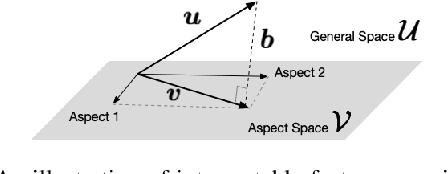

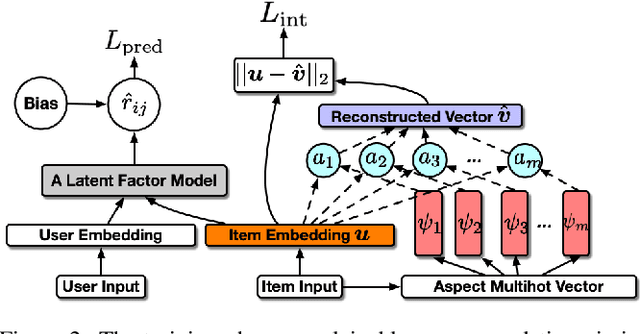

Abstract:Latent factor collaborative filtering (CF) has been a widely used technique for recommender system by learning the semantic representations of users and items. Recently, explainable recommendation has attracted much attention from research community. However, trade-off exists between explainability and performance of the recommendation where metadata is often needed to alleviate the dilemma. We present a novel feature mapping approach that maps the uninterpretable general features onto the interpretable aspect features, achieving both satisfactory accuracy and explainability in the recommendations by simultaneous minimization of rating prediction loss and interpretation loss. To evaluate the explainability, we propose two new evaluation metrics specifically designed for aspect-level explanation using surrogate ground truth. Experimental results demonstrate a strong performance in both recommendation and explaining explanation, eliminating the need for metadata. Code is available from https://github.com/pd90506/AMCF.
* Proceedings of the Twenty-Ninth International Joint Conference on Artificial Intelligence (IJCAI)
On the Learning Property of Logistic and Softmax Losses for Deep Neural Networks
Mar 04, 2020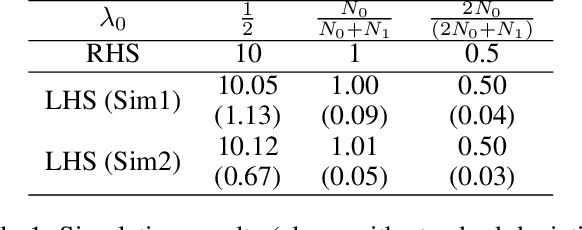


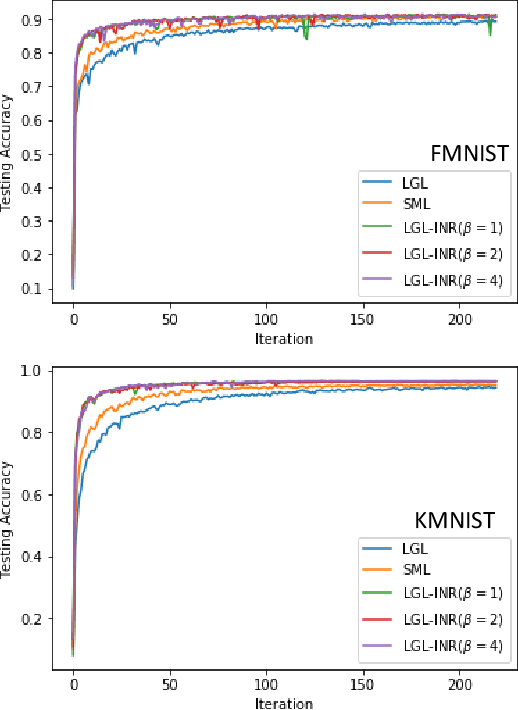
Abstract:Deep convolutional neural networks (CNNs) trained with logistic and softmax losses have made significant advancement in visual recognition tasks in computer vision. When training data exhibit class imbalances, the class-wise reweighted version of logistic and softmax losses are often used to boost performance of the unweighted version. In this paper, motivated to explain the reweighting mechanism, we explicate the learning property of those two loss functions by analyzing the necessary condition (e.g., gradient equals to zero) after training CNNs to converge to a local minimum. The analysis immediately provides us explanations for understanding (1) quantitative effects of the class-wise reweighting mechanism: deterministic effectiveness for binary classification using logistic loss yet indeterministic for multi-class classification using softmax loss; (2) disadvantage of logistic loss for single-label multi-class classification via one-vs.-all approach, which is due to the averaging effect on predicted probabilities for the negative class (e.g., non-target classes) in the learning process. With the disadvantage and advantage of logistic loss disentangled, we thereafter propose a novel reweighted logistic loss for multi-class classification. Our simple yet effective formulation improves ordinary logistic loss by focusing on learning hard non-target classes (target vs. non-target class in one-vs.-all) and turned out to be competitive with softmax loss. We evaluate our method on several benchmark datasets to demonstrate its effectiveness.
Improve SGD Training via Aligning Mini-batches
Feb 27, 2020

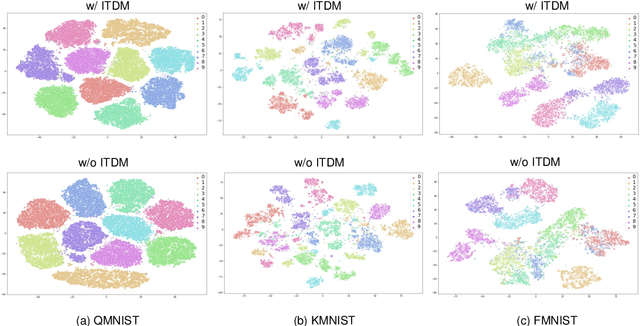

Abstract:Deep neural networks (DNNs) for supervised learning can be viewed as a pipeline of a feature extractor (i.e. last hidden layer) and a linear classifier (i.e. output layer) that is trained jointly with stochastic gradient descent (SGD). In each iteration of SGD, a mini-batch from the training data is sampled and the true gradient of the loss function is estimated as the noisy gradient calculated on this mini-batch. From the feature learning perspective, the feature extractor should be updated to learn meaningful features with respect to the entire data, and reduce the accommodation to noise in the mini-batch. With this motivation, we propose In-Training Distribution Matching (ITDM) to improve DNN training and reduce overfitting. Specifically, along with the loss function, ITDM regularizes the feature extractor by matching the moments of distributions of different mini-batches in each iteration of SGD, which is fulfilled by minimizing the maximum mean discrepancy. As such, ITDM does not assume any explicit parametric form of data distribution in the latent feature space. Extensive experiments are conducted to demonstrate the effectiveness of our proposed strategy.
CRCEN: A Generalized Cost-sensitive Neural Network Approach for Imbalanced Classification
Jun 10, 2019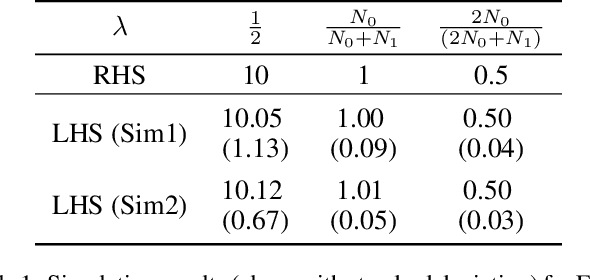
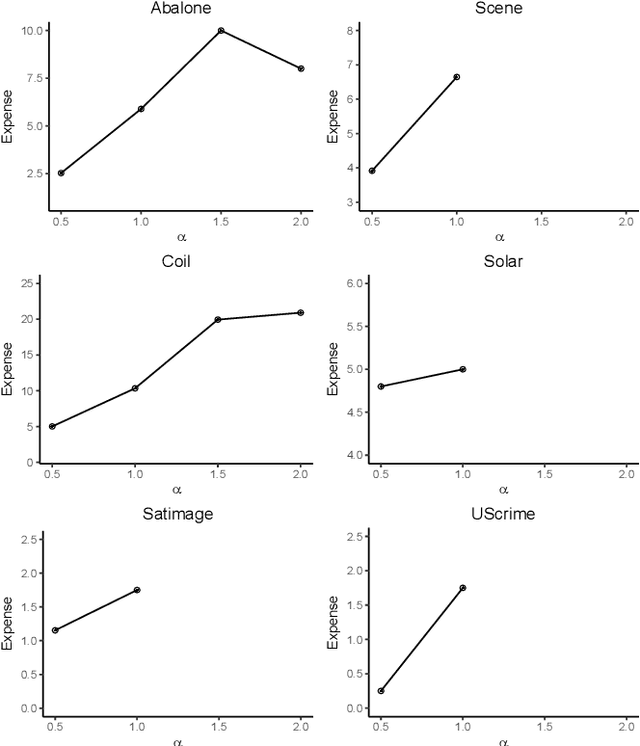
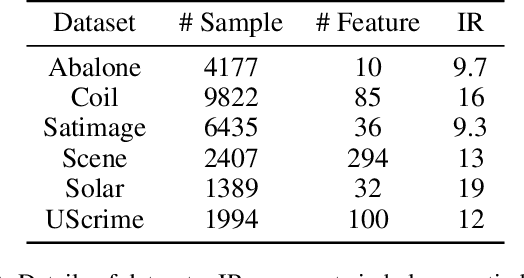
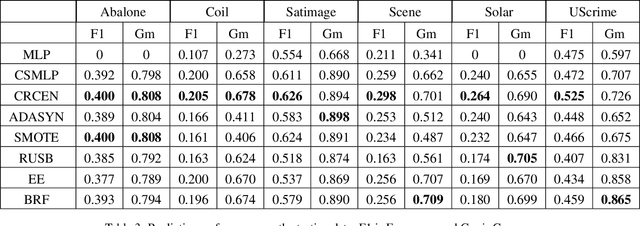
Abstract:Classification on imbalanced datasets is a challenging task in real-world applications. Training conventional classification algorithms directly by minimizing classification error in this scenario can compromise model performance for minority class while optimizing performance for majority class. Traditional approaches to the imbalance problem include re-sampling and cost-sensitive methods. In this paper, we propose a neural network model with novel loss function, CRCEN, for imbalanced classification. Based on the weighted version of cross entropy loss, we provide a theoretical relation for model predicted probability, imbalance ratio and the weighting mechanism. To demonstrate the effectiveness of our proposed model, CRCEN is tested on several benchmark datasets and compared with baseline models.
Interpreting Age Effects of Human Fetal Brain from Spontaneous fMRI using Deep 3D Convolutional Neural Networks
Jun 09, 2019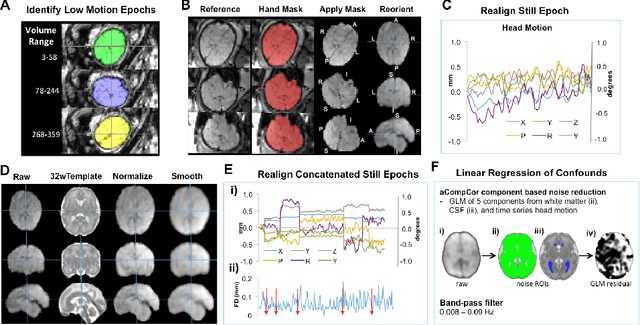


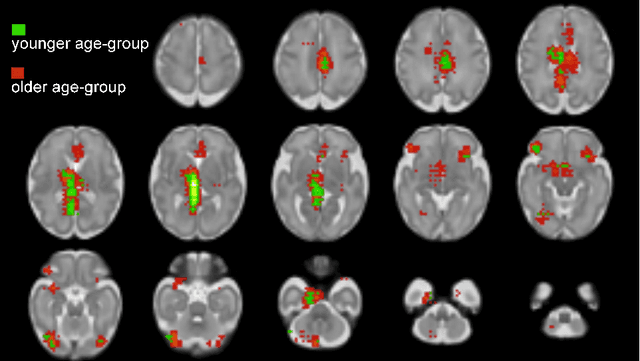
Abstract:Understanding human fetal neurodevelopment is of great clinical importance as abnormal development is linked to adverse neuropsychiatric outcomes after birth. Recent advances in functional Magnetic Resonance Imaging (fMRI) have provided new insight into development of the human brain before birth, but these studies have predominately focused on brain functional connectivity (i.e. Fisher z-score), which requires manual processing steps for feature extraction from fMRI images. Deep learning approaches (i.e., Convolutional Neural Networks) have achieved remarkable success on learning directly from image data, yet have not been applied on fetal fMRI for understanding fetal neurodevelopment. Here, we bridge this gap by applying a novel application of deep 3D CNN to fetal blood oxygen-level dependence (BOLD) resting-state fMRI data. Specifically, we test a supervised CNN framework as a data-driven approach to isolate variation in fMRI signals that relate to younger v.s. older fetal age groups. Based on the learned CNN, we further perform sensitivity analysis to identify brain regions in which changes in BOLD signal are strongly associated with fetal brain age. The findings demonstrate that deep CNNs are a promising approach for identifying spontaneous functional patterns in fetal brain activity that discriminate age groups. Further, we discovered that regions that most strongly differentiate groups are largely bilateral, share similar distribution in older and younger age groups, and are areas of heightened metabolic activity in early human development.
Deep Representation Learning for Road Detection through Siamese Network
May 26, 2019
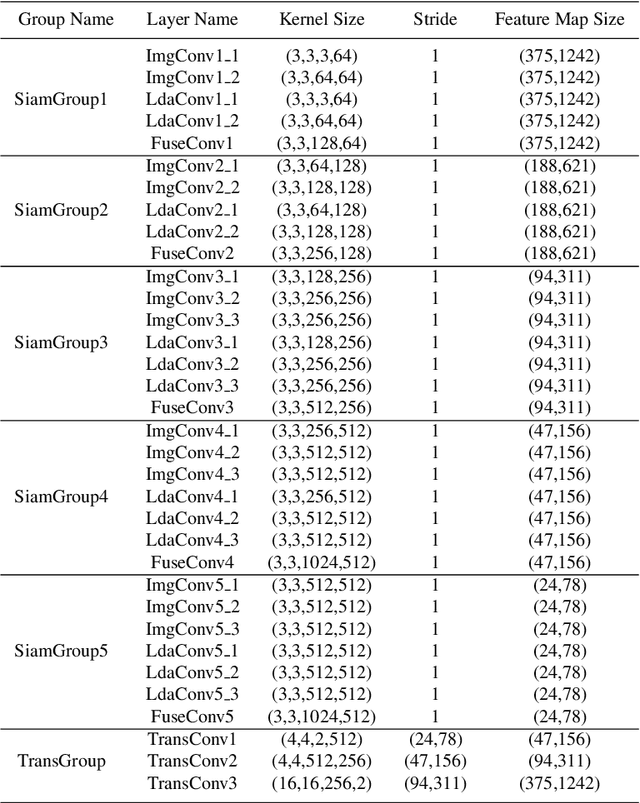
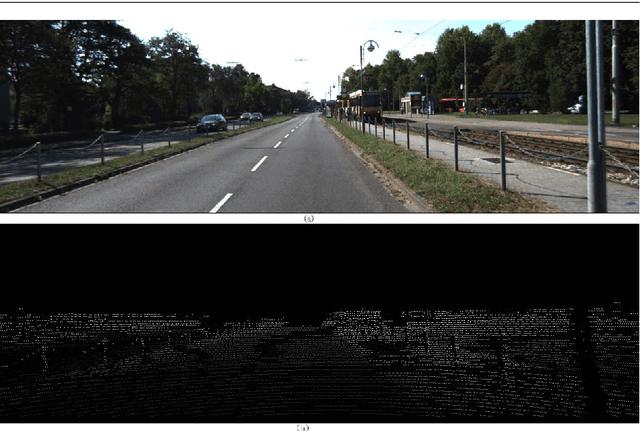

Abstract:Robust road detection is a key challenge in safe autonomous driving. Recently, with the rapid development of 3D sensors, more and more researchers are trying to fuse information across different sensors to improve the performance of road detection. Although many successful works have been achieved in this field, methods for data fusion under deep learning framework is still an open problem. In this paper, we propose a Siamese deep neural network based on FCN-8s to detect road region. Our method uses data collected from a monocular color camera and a Velodyne-64 LiDAR sensor. We project the LiDAR point clouds onto the image plane to generate LiDAR images and feed them into one of the branches of the network. The RGB images are fed into another branch of our proposed network. The feature maps that these two branches extract in multiple scales are fused before each pooling layer, via padding additional fusion layers. Extensive experimental results on public dataset KITTI ROAD demonstrate the effectiveness of our proposed approach.
Road Segmentation with Image-LiDAR Data Fusion
May 26, 2019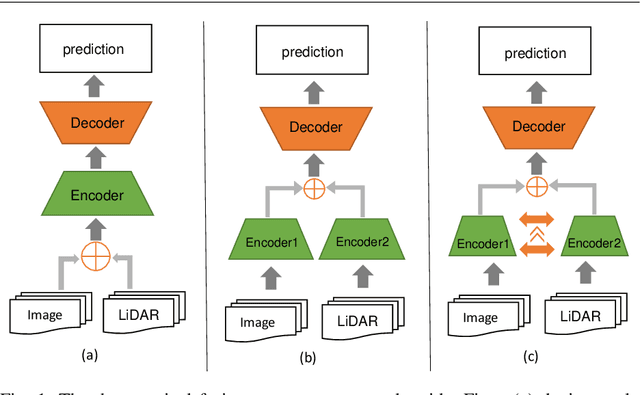

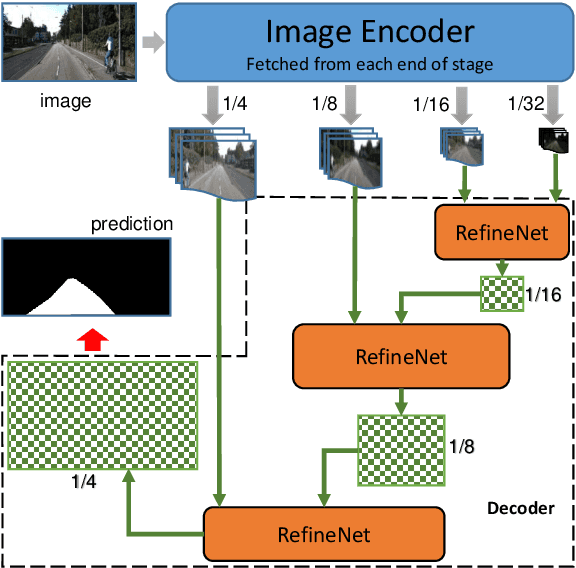

Abstract:Robust road segmentation is a key challenge in self-driving research. Though many image-based methods have been studied and high performances in dataset evaluations have been reported, developing robust and reliable road segmentation is still a major challenge. Data fusion across different sensors to improve the performance of road segmentation is widely considered an important and irreplaceable solution. In this paper, we propose a novel structure to fuse image and LiDAR point cloud in an end-to-end semantic segmentation network, in which the fusion is performed at decoder stage instead of at, more commonly, encoder stage. During fusion, we improve the multi-scale LiDAR map generation to increase the precision of the multi-scale LiDAR map by introducing pyramid projection method. Additionally, we adapted the multi-path refinement network with our fusion strategy and improve the road prediction compared with transpose convolution with skip layers. Our approach has been tested on KITTI ROAD dataset and has competitive performance.
 Add to Chrome
Add to Chrome Add to Firefox
Add to Firefox Add to Edge
Add to Edge